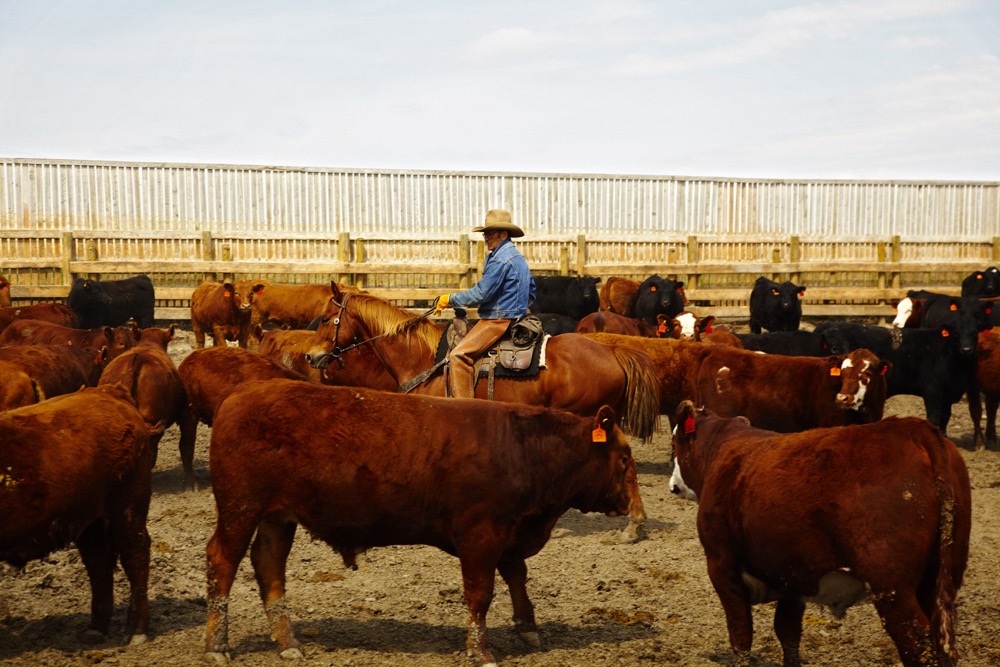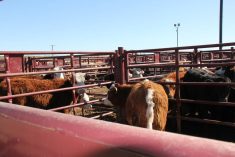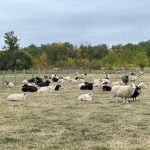Bovine respiratory disease (BRD) has long been the most serious respiratory challenge facing the beef industry, causing half of all cattle deaths from disease in North America. Its identification in individual animals almost always comes after the bacterial infection has established itself, causing an antibiotic response to play from behind.
During a networking event in 2018, Dr. Mohit Verma, assistant professor in the agricultural and biological engineering department at Purdue University’s College of Agriculture, happened to be seated next to a feedlot operator.
“It was this fortuitous meeting that provided the inspiration for an idea,” says Verma. “This gentleman was mentioning how cattle get sick on his feedlot, but the staff doesn’t know what pathogen, bacteria or virus is causing the disease. Often, they end up giving antibiotics almost by trial and error, usually with a fairly high failure rate. I thought this shouldn’t be the case. We should be able to test for the exact issue and prescribe the correct antibiotics.”
Read Also

Building demand together: The impact of Canada’s beef import levy
The beef import levy has become a central tool for ensuring balance in Canada’s beef industry
After receiving internal funding from the university, and external funding from a National Institute of Food and Agriculture grant as well as the Foundation for Food and Agriculture Research, Verma and his team began work on devising an accurate chute-side test for BRD.
[READ MORE] New nasal spray may provide relief from BRD
Practicality and cleanliness
When finalized an operational, Verma envisions a system where people pull cattle based on symptoms or clinical signs, conduct tests and make informed decisions on the course forward based on the test results. It’s likely the tests would be completed in batches of 10 to 20, done in parallel with results confirmed within an hour. He isn’t certain what the exact multiple number might be but hopes to make the process scalable.
His group is still working through the R&D phase, but student-led feedlot trials have already been completed.
“One of our goals is to make it usable on farmyards and feedlots where the animals are,” he says. “Cleanliness can’t be a roadblock. In our initial tests, we didn’t take extra precautions or use ultra-clean surfaces. We used whatever was available with excellent results.”
[READ MORE] Research may yield new approaches to managing pneumonia in cattle
Verma believes hygiene won’t be an issue as they’re using a method of nucleic acid amplification called loop-mediated isothermal amplification, a more robust acid not as sensitive to differing environmental conditions.
He estimates costs in the $10/test range, depending on many factors after the initial equipment is purchased including the heater, imager and disposable cartridges.
Elements of the test
The chute-side test works by detecting nucleic acids, beginning with the targeting of three of the top four bacteria causing BRD — Pasteurella multocida, Mannheimia haemolytica and Histophilus somni.
A nasal swab is used to collect a sample, and the swab is put into a liquid medium which is transferred to an acid in a tube containing the necessary reagents. The beginning pH colour is red as it is placed into a water bath.
“The water bath is simply a consumer-grade sous-vide cooker providing the heat,” he explains. “The heat triggers the reaction, and if the target is present, it will amplify the DNA and produce many copies, leading to a pH colour change. If it’s positive, we’ll see a change from red to yellow. If it’s negative, and the bacteria is not present, it remains red.”
Testing goals
Verma adds they can identify which of the three strains of bacteria are present, but they’re still working on identifying harmful levels as some may be present in the background of healthy animals.
“We’re still asking the question of ‘How high does it need to be to be an issue?’ Pathogens occur naturally and may be commensal bacteria present at low levels, not causing sickness. Our research requires more clinical data from profiling cattle and gauging levels in their natural state. We need to establish what those levels are, then use this information to understand when we see it higher, it’s causing a problem. If it’s below, it might be a commensal.”
He says the comprehensive goal is adding a health management tool to determine which pathogen is causing an infection and which antibiotic is more likely to be successful against it. He’s also working on antibiotic-resistant genes and examining viruses. This combined effort should create a powerful technology. When it’s known resistance is present, that specific antibiotic shouldn’t be used. If no bacterial pathogens are present, and it’s a viral pathogen, antibiotics shouldn’t be used at all.
Verma hopes to encourage effective antibiotics use, so they aren’t incorrect for the situation or given unnecessarily.
“We’re not there yet, but that’s really where we want to go in the big picture. We’re aiming to get to the point of — if we don’t need it, don’t use it. If we do need it, which one is the correct one?”
Future plans
The BRD test is part of Verma’s startup company, Krishi Inc., working together with Purdue University. His company licenses the technology coming from his lab and is developing the methodology into something for widespread use.
“We’re still in the early phases although we’re gaining traction. These products will be regulated, so dealing with this aspect will take time. It will likely be two to three years before it becomes a commercial product.”
Verma emphasizes since the test is nucleic acid-based, it’s also easier to adapt to other diseases and species. Long-term goals include expanding from cattle to swine and eventually companion animals.
His team has received funding to examine how the technology might be useful in addressing African swine fever.
















